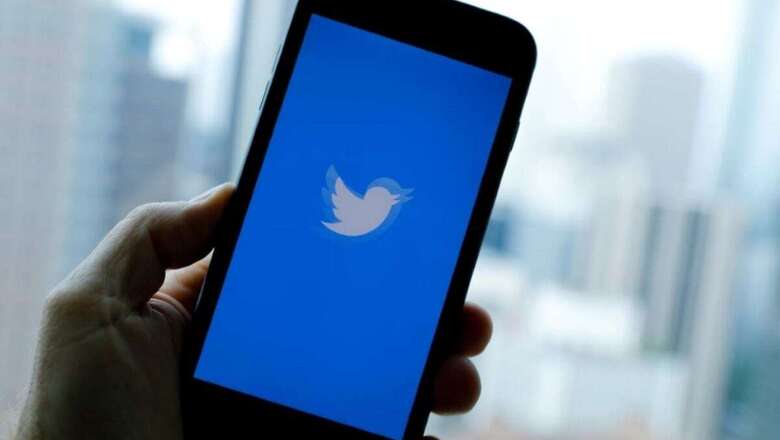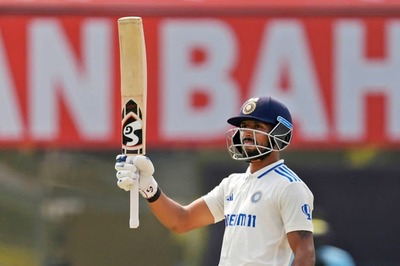
views
Micro-blogging website Twitter recently restarted its verification procedure after it was halted for more than three years. Twitter restarted the blue tick verification on Friday, January 22 and detailed how prominent users can get a blue tick on their profile this time around. The Twitter blue tick has been a point of contention among the company and its users since a while, even before Twitter halted the verification program on November 17. In this article, we will look at who all are eligible for a blue tick now, what exactly is the meaning of the much sought-after blue tick, and why Twitter halted the program back in 2017.
Who All Can Get a Blue Tick on Twitter
Now, in order to be eligible for the blue tick, users need to be from within six categories of people that Twitter has mentioned. These include Governments, companies, news organisations, entertainment, sports (including esports), activists and other influential individuals. Twitter says that government officials like head of state, elected officials, appointed ministers, institutional entities, ambassadors, and official spokespersons are eligible for the blue tick. Official candidates for state or national-level public office may also be verified in certain countries. To qualify, there must be a public reference to the account on an official government or party site or publication with multiple references in news media. Official accounts of public utilities and other services may also be verified, as may people in leadership positions and official spokespeople.
If a company or a brand wants to the blue badge on their Twitter profile, the entity must meet two critical requirements. First, presence in public indices, including public stock exchanges, stable Wikipedia articles that meet the encyclopedia’s notability standards, and databases such as GlobalGiving. The account must also have a follower count in the top .1 per cent of active accounts located in the same geographic region.
Additionally, any official accounts of qualifying news organisations, as well as individual accounts of journalists employed by qualifying organisations can get verified. These organisations need to be recognised by government bodies and adhere to recognised professional standards for journalism, laid out by the Society of Professional Journalists, Independent Press Standards Organisation, and International Federation of Journalists. Independent or freelance journalists may be verified if they can provide at least three bylines or credits in qualifying publications, published within the six months prior to applying.
Accounts of major entertainment companies and film or music studios (even event organisers) are eligible for the verification process. In order to get verified, the label must have a connection to a verified organisation and the website associated with the production house includes a link to the profile. Actors or other professionals (comedians, agents) from the industry must ensure three or more featured references or have five production credits on their IMDB profile. They can also provide their website link for the verification process.
Sports personalities and team accounts listed on the official team website or in sports data services such as Sportradar may be verified, as well. Upcoming athletes participating in global competitions such as the Olympics and Paralympics can get verified too. Twitter says that the platform will not give a Blue Tick logo on amateur athletes’ profile unless they meet the criteria for influential individuals (explained below). Accounts of professional esports leagues, teams, and coaches listed on the official team website or who have three or more featured references in news outlets such as Kotaku, Polygon, or IGN may be verified. References on publication sites must not be older than six months.
Outside the professional categories, people who use Twitter effectively to bring awareness, share information, and “galvanise community members” around a cause can get the blue tick. Accounts of such individuals must ensure healthy activity (tweets, likes, and more) in the last six months, and generally abide by the Twitter Rules. For off Twitter notability, the individual must feature on Google Trends with evidence of recent search activity. A stable Wikipedia article about them that meets the encyclopedia’s notability standards for people can also be used for verification. Similarly, references in news publications will count as well.
What Does Twitter Blue Tick Mean
A blue tick on Twitter means that the profile is verified by Twitter, that it belongs to that certain prominent personality. Twitter itself says that the blue tick is meant to “authenticate identity and voice on the platform.” However, the company’s verification was broiled with controversies with some saying that the process is arbitrary, and some accusing Twitter of being partial in terms of handing out the blue tick.
Why Did Twitter Stop Verifying Accounts in 2017
In 2017, Twitter said that it is halting the procedure as it was “broken”. It had back then said, “we recognise that we have created this confusion and need to resolve it. We have paused all general verifications while we work and will report back soon.” Twitter had back then said that it will correct its verification policy and will be back soon. It took the company well more than three years to do so.
While announcing the restart of the verification procedure in November 2020, Twitter had said, “We paused our public verification program after hearing feedback that it felt arbitrary and confusing to many people. A year later, we deprioritized this work further to focus on protecting the integrity of the public conversation around critical moments like the 2020 US election. Since then, we haven’t been clear about who can become verified and when, why an account might be unverified, or what it means to be verified.”
In November 2017, Twitter’s move to suspend the verification procedure came after the company verified the account of a Jason Kessler, who organised Charlottesville’s “Unite the Right” rally, where a counter protester died after a suspected Nazi sympathiser plowed his vehicle in front of people. Back then, it was said that Twitter’s suspension of the verifications program was due to the verification of Kessler’s account, which sparked mass outrage among people everywhere.
Read all the Latest News, Breaking News and Coronavirus News here




















Comments
0 comment